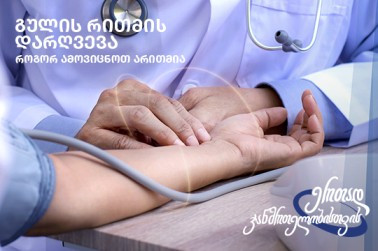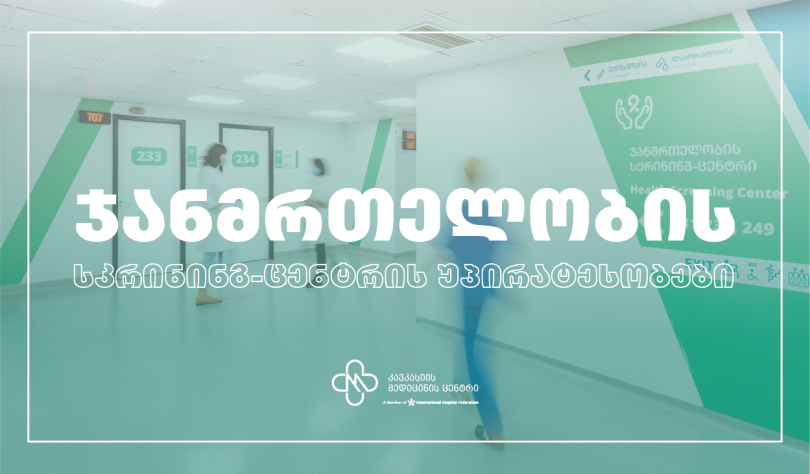


Blog
Endometriotic Cyst
05 March 2020

The endometriotic ovarian cyst is part of a disease known as endometriosis. The uterus is the place where the child grows when the woman is pregnant. The uterus has the innermost lining (endometrium). Endometriosis is a disease during which tissue similar to the uterine mucosa begins to spread elsewhere in your body. These areas of tissue are called “implants,” “nodules,” or “lesions.” They are most often found:
In recent years, the approach to the treatment of ovarian endometrial cysts has changed significantly, especially with regard to the treatment of recurrent endometriosis, preservation of fertility and the treatment of infertility.
Causes of Occurrence
Who is at risk for endometriotic ovarian cysts? Pathology is most often diagnosed among women aged 30-40 years. But in general, it can happen to any woman who still has the menstrual cycle. Certain factors increase or decrease the likelihood of developing a pathology.
In the high-risk group are people who:
The low-risk group includes those among who:
Symptoms
Diagnosis of endometriotic ovarian cysts
If a disease is suspected, the patient should be examined by a gynecologist. You may also need to take a tumor marker test, undergo an ultrasound examination and MRI of the pelvic organs. Surgery remains the only way to know exactly that you have endometriosis. However, the attending physician should first ask about your symptoms and medical history. The surgery in order to diagnose endometriosis is called laparoscopy. This is the type of surgery during which a laparoscope is used - a thin tube with a camera and a light source at the end. The surgeon inserts the device through small incisions in the skin and diagnoses the image obtained on the monitor. The doctor makes a diagnosis based on how the spots of endometriosis look. You may also need a biopsy to take a tissue sample.
Methods of Treatment
There is no medication to cure endometriotic ovarian cysts, but there are treatments for the symptoms. The attending physician selects the best option based on the results of the examination. Pain management for endometriosis includes nonsteroidal anti-inflammatory pain medications (NSAIDs) such as ibuprofen and prescription drugs specifically for endometriosis. Sometimes during severe pain, opioids are prescribed. Hormone therapy, including birth control pills, progestin therapy, and gonadotropin-releasing hormone (GnRH) agonists. GnRH agonists cause temporary menopause and allow controlling the growth of endometriosis.
Surgical treatment is the main therapeutic option. The most effective treatments are radical procedures, including laparoscopic adhesiolysis, removal of a cyst along with its capsule and the remaining foci of endometriosis. The surgery is performed using laparoscopic method. However, small cysts should not be treated surgically, especially for patients older than 35 years. Surgical treatment can be considered in infertile women and those who could not get pregnant, despite 1-1.5 years of testing, as well as in cases where in vitro fertilization is impossible. In addition, large cysts with a diameter of more than 4 cm should be treated surgically due to the risk of rupture or twisting. Basically, the surgery is performed by laparoscopy. Also, in more severe cases, doctors may resort to hysterectomy - surgery to remove the uterus.
Prevention
The most effective preventive measure for recurrent ovarian endometriosis is unilateral ovariectomy with preservation of the egg count (ovarian reserve). Such a procedure should be considered in women who are no longer interested in childbirth or have a different endometriotic cyst in the same ovary. The role of pharmacotherapy in this matter is rather limited; this should be considered in patients in whom diffuse endometriosis is associated with pain.
Therapeutic agents from the following groups may be used: estrogen-progestin, progestogens, including progesterone-releasing intrauterine systems and gonadotropin-releasing hormone agonists. Women with infertility should become pregnant as soon as possible, and in patients who are not pregnant or older than 35 years of age, in vitro fertilization should be the choice.
- On or under the ovaries;
- On the fallopian tubes that transfer the eggs from the ovary to the uterus;
- Behind the uterus;
- On tissues that hold the uterus in place;
- On the intestines or bladder;
- In rare cases, tissue may grow on lungs or other parts of the body.
In recent years, the approach to the treatment of ovarian endometrial cysts has changed significantly, especially with regard to the treatment of recurrent endometriosis, preservation of fertility and the treatment of infertility.
Causes of Occurrence
- Artificial abortion;
- Diagnostic curettage of the uterus;
- Genetic predisposition;
- Chronic inflammatory diseases of the ovaries, uterus and tubes;
- Venereal diseases;
- Using the intrauterine device for a long time;
- Overweight;
- Physiological features of the cervical canal that impede the free flow of menstrual blood;
- Sexual activity during menstruation.
Who is at risk for endometriotic ovarian cysts? Pathology is most often diagnosed among women aged 30-40 years. But in general, it can happen to any woman who still has the menstrual cycle. Certain factors increase or decrease the likelihood of developing a pathology.
In the high-risk group are people who:
- Have a mother, daughter or sister who was diagnosed with the mentioned disease;
- Menstrual cycle began before 11 years;
- Short menstrual cycles (less than 27 days);
- Have heavy menstrual cycles that last more than seven days;
The low-risk group includes those among who:
- The menstrual period began in late adolescence;
- Had a pregnancy previously;
- Are physically active (more than 4 hours per week);
- Have an extremely low body fat percentage.
Symptoms
- Low back pain;
- Lower abdominal pain;
- Pain during intercourse;
- Menstrual pain;
- Generalized weakness;
- Nausea;
- Apathy;
- Fever;
- Infertility;
- Digestive system disorders.
Diagnosis of endometriotic ovarian cysts
If a disease is suspected, the patient should be examined by a gynecologist. You may also need to take a tumor marker test, undergo an ultrasound examination and MRI of the pelvic organs. Surgery remains the only way to know exactly that you have endometriosis. However, the attending physician should first ask about your symptoms and medical history. The surgery in order to diagnose endometriosis is called laparoscopy. This is the type of surgery during which a laparoscope is used - a thin tube with a camera and a light source at the end. The surgeon inserts the device through small incisions in the skin and diagnoses the image obtained on the monitor. The doctor makes a diagnosis based on how the spots of endometriosis look. You may also need a biopsy to take a tissue sample.
Methods of Treatment
There is no medication to cure endometriotic ovarian cysts, but there are treatments for the symptoms. The attending physician selects the best option based on the results of the examination. Pain management for endometriosis includes nonsteroidal anti-inflammatory pain medications (NSAIDs) such as ibuprofen and prescription drugs specifically for endometriosis. Sometimes during severe pain, opioids are prescribed. Hormone therapy, including birth control pills, progestin therapy, and gonadotropin-releasing hormone (GnRH) agonists. GnRH agonists cause temporary menopause and allow controlling the growth of endometriosis.
Surgical treatment is the main therapeutic option. The most effective treatments are radical procedures, including laparoscopic adhesiolysis, removal of a cyst along with its capsule and the remaining foci of endometriosis. The surgery is performed using laparoscopic method. However, small cysts should not be treated surgically, especially for patients older than 35 years. Surgical treatment can be considered in infertile women and those who could not get pregnant, despite 1-1.5 years of testing, as well as in cases where in vitro fertilization is impossible. In addition, large cysts with a diameter of more than 4 cm should be treated surgically due to the risk of rupture or twisting. Basically, the surgery is performed by laparoscopy. Also, in more severe cases, doctors may resort to hysterectomy - surgery to remove the uterus.
Prevention
The most effective preventive measure for recurrent ovarian endometriosis is unilateral ovariectomy with preservation of the egg count (ovarian reserve). Such a procedure should be considered in women who are no longer interested in childbirth or have a different endometriotic cyst in the same ovary. The role of pharmacotherapy in this matter is rather limited; this should be considered in patients in whom diffuse endometriosis is associated with pain.
Therapeutic agents from the following groups may be used: estrogen-progestin, progestogens, including progesterone-releasing intrauterine systems and gonadotropin-releasing hormone agonists. Women with infertility should become pregnant as soon as possible, and in patients who are not pregnant or older than 35 years of age, in vitro fertilization should be the choice.
Other Blogposts

Explore Now
სიცოცხლის რიტმი: რა უნდა ვიცოდეთ გულის არითმიის შესახებ?
18 July 2024
არითმია, ანუ არარეგულარული გულისცემა, გულის ნორმალური რიტმის ნებისმიერი ტიპის დარღვევას ეწოდება. ფიზიოლოგიურად გულისცემის სიხშირე შეიძლება გაიზარდოს ფიზიკური აქტივობის შესაბამისად ან შემცირდეს მოსვენებისა და ძილის დროს. ასევე, გულისცემის გამოტოვების იშვიათი შეგრძნება, უმეტესწილად არ უკავშირდება პათოლოგიურ ცვლილებებს, თუმცა, ხშირი არარეგულარული რითმი ძირითადად მიგვანიშნებს არითმიებზე, რა დროსაც გულისცემის პათოლოგიური ცვლილების გამო, ორგანოები ვერ მარაგდება საკმარისი რაოდენობის სისხლით.

Explore Now
ბავშვი ინსულტის დიაგნოზით: 13 წლის მოზარდის განკურნების ისტორია
05 October 2022
2022 წლის დადგომას ველოდით. ალექსანდრესთან ერთად ნაძვის ხის აწყობას ვგეგმავდით. მოულოდნელად, მისი ოთახიდან უცნაური ხმები შემომესმა. სასწრაფოდ შევაღე კარი და ვნახე სრულიად გაშეშებული ჩემი შვილი, რომელიც ერთ წერტილში იყურებოდა და უემოციოდ იჯდა. მან ჩვენი ყურადღების მიქცევა მხოლოდ ხელების ოდნავი მოძრაობით შეძლო.

Explore Now
Benefits of a screening center
15 November 2021
Caucasus Medical Center plays a huge role in the development of the screening center. Here, diagnostics are performed using modern high-tech devices and the error is minimized. Also, the screening center is distinguished by the team of multidisciplinary doctors. With their joint involvement, the treatment issues of the patients are discussed.



